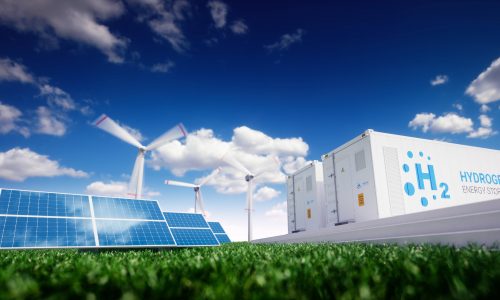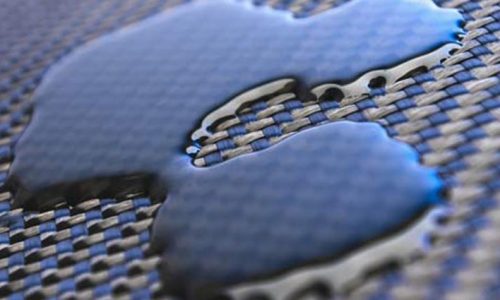Polyethylene terephthalate (PET), a thermoplastic polymer resin of the polyester family, is one of the most common consumer plastics used. PET is made of polymerized units of the monomer ethylene terephthalate, with repeating (C10H8O4) units. It is the main feedstock for the production of polyester fibers and packaging material. In this article, we will focus on what are alternative ways to produce PET and how can we recycle PET.
Properties and applications
Polyethylene Terephthalate offers various beneficial properties such as non-toxic nature, safety, light weight, increased flexibility, high strength, and is 100% recyclable. PET is available in both homopolymer and copolymer forms and can be processed up to 3 to 4 times without affecting its chemical properties. Moreover, it also offers unique physical properties, such as it is shatterproof, transmissive and non-reactive to food and water. Within a certain temperature band the PET polymer becomes extremely pliable, making it easy to mould into different shapes. This occurs between the glass transition temperature and the melting point, which for PET are 75℃ and 260℃ respectively. Once cooled, PET returns to a solid form. Typical uses of polyethylene terephthalate are:
- Polyester fibers in textile industry
- Electrical insulation
- Solar panels
- automotive parts
- plastic bottles for water and carbonated soft drinks
- packaging for wide range of food products
- adhesive tapes
- cosmetic jars
- microwavable containers
- transparent films
- 3D printing
Given its wide usage in daily lives, it is no surprise that the global polyethylene terephthalate market was worth $ 43.81 billion in 2019. The global market size for PET is projected to evolve with a CGAR of 7.08% and 5.26% by revenue and volume during the forecast period 2020-2025. Rising food and beverage industries, rising PET collection and recycling rates in Europe, and demand for sustainable and recyclable materials are key factors driving the market. The rising demand for lightweight and packaged food remains the main driving factor for the PET market, with an increasing focus on various applications. PET resin packaging technology is bound to help this demand expand.
However, this growth in PET production can’t be left unchecked. Although the scenario is slowly changing, we are still heavily dependent on oil and gas for PET production. This has led to increased landfill wastes and greenhouse gas emissions into the atmosphere. Lets first try to understand how PET is conventionally produced and if there are other greener production processes.
Conventional production process
PET is mostly manufactured starting from crude oil and producing PET petrochemical precursors, namely purified terephthalic acid (PTA) or dimethyl terephthalate (DMT) and mono ethylene glycol (MEG). The monomer bis(2-hydroxyethyl) terephthalate can be synthesized by the esterification reaction between terephthalic acid and ethylene glycol with water as a byproduct. Esterification is performed at high temperature and pressure to increase reaction rates. Homogenous catalysis is used, based on metal acetate compounds. Another way of synthesizing the monomer is by transesterification reaction between ethylene glycol and dimethyl terephthalate (DMT) with methanol as a byproduct.
Polymerization is through a polycondensation reaction of the monomers (done immediately after esterification/transesterification) with water as the byproduct. After polycondensation, the product is finished through crystallization and pelletisation. The PET pellets are then sent to spinning, if they are meant to produce fibers. Conversely, for bottle grade, PET is further processed through a solid state polycondensation (SSP) step, where inert gases or vacuum are used to further remove MEG at temperatures between the glass transition and the melting point. PET is usually produced through semi-batch or continuous processes, where the latter currently represents the state of the art. Capacities can range from few kt/y to more than 1 Mt/y. Typically, production of both packaging and fiber grade resins can be achieved in the same plant.
Alternative processes
Biobased routes
PET can be produced from biobased raw materials. Some companies produced biobased ethylene glycol (bioMEG) that can be used to achieve partially biobased PET (bioPET, approximately 33wt%). In addition to this a variety of companies are developing routes to biobased terephathalic acid to achieve 100% bioPET. The low yields and high cost of conversion are challenges to be resolved in successful market introduction of 100% bioPET.
Recycled PET
One of the ways to recycle PET is to chemically convert PET back to the initial or intermediate raw materials: purified terephthalic acid (PTA) or dimethyl terephthalate (DMT) or bis(2-Hydroxyethyl) terephthalate (BHET) and ethylene glycol (EG) where the polymer structure is destroyed completely. In order to recycle PET for use in food packaging, PET is depolymerised or hydrolyzed down to monomers. Hydrolysis, methanolysis, glycolysis are popular ways to break down the polymer. These monomers are then re-polymerized to make recycled-PET. This recycling can continue infinitely to reach the same properties as virgin PET. However, it is important to design these processes in a way that the process is efficient and losses are minimized. These losses need to be met with virgin petrochemical PET to maintain production levels. The goal should be to ensure that these recycling processes are truly effective in meeting environmental goals while considering an overall life cycle perspective at a reasonable cost.
Transesterification of PET together with glycols/polyols or glycerol is another way to recycle, to make a polyol which may be used in ways such as polyurethane production or PU foam production. Another way is to mechanically recycle PET where the original polymer properties are being maintained or reconstituted. Further heat treatment of recycled PET flakes removes any volatiles making them safe and meets the requirements to be safe for direct food contact. Although the drawback of mechanical recycling is that the properties are no longer maintained after multiple recycles.
Active separation of plastics according to their types is a crucial step for recycling. Most countries now follow the resin identification code to recognize the type of plastic used in making certain products. Bottles made from PET can be converted into lower grade products such as carpets, fleece jackets, comforter fill, and luggage. Depending on the purity of the recycled materials, polyester can be used today in most of the polyester manufacturing processes as a blend with virgin polymer or increasingly as 100% recycled polymer.
Post consumer PET bottles stored for recycling [Source : generalplastic.sk]
Sustainability Impacts
The raw material and the type of production process employed can have large implications on the amount of energy use, water use and greenhouse gas emissions. Based on the availability of data, additional information (e.g., land use, water use) can also be estimated to determine the sustainability of the pathway under consideration.
Cumulative energy demand – In recent studies, for bottle grade production, virgin polymer PET is reported to require the highest amount of energy per kg of product. A lower value is reported for biobased PET, assuming sugar cane derived MEG. On the other hand, recycled PET is reported to require the least amount of energy. This values differ based on the type of recycling route/technology used.
Greenhouse gases emissions – Values of greenhouse gases emissions (GHG) for virgin polymer bottle grade production based on internal study showed that conventional PET has the highest kgCO2 emissions per kg of product, followed by bio PET and then rPET (in decreasing order). It is important to note that the sustainability impact values and benefits depend on the choice of processes and the energy supply mix.
Land use – A potentially important aspect associated with biobased PET is land use change. It entails that biobased PET processes lead to changes in conventional land use patterns (e.g. diversion of virgin forest or peat lands for agricultural use) which can lead to a net increase in greenhouse gas emissions. Contrary to this, the land use associated with virgin PET is negligible in comparison.
Conclusion
The excessive use of PET has led to a problem of its disposal. Major disadvantages of polyethylene terephthalate compared to its long list of advantages is that it is not biodegradable and contributes to environmental impacts such as climate change and resource depletion. Despite a satisfactory waste collection system implemented around the world, a considerable amount of used PET bottles unfortunately end up in water bodies and on bare lands. This occurs especially at places where recycling systems are not in place. Additionally due to their volume the cost of landfilling is very high, likewise also increasing environmental hazards. Recycling of PET therefore becomes extremely important. But it’s not easy!
The availability of post-consumer PET material is a challenge. There is no formal segregation of waste and therefore used PET bottles and waste textile materials are disposed of together with domestic waste. We require mindful disposal of plastics according to their material types. This is because the success of recycling lies in efficient separation, purification and decontamination at the right place during processing. The earlier in the process foreign substances are removed, and the more thoroughly this is done, the more efficient the process is. This is possible with strict laws and educating people about segregation of wastes. Most people are unaware of impacts a small act of active separation can cause. Another way to improve PET recovery would be through the use of container deposit systems.
Things are looking good: in 2018, 90% of the PET bottles sold in Finland were recycled. The high rate of recycling is mostly a result of the deposit system in use. The law demands a tax of 0,51 €/l for bottles and cans that are not part of a refund system. As more and more nations implement stricter regulations, we should soon see a larger percentage of PET recycled. Companies are increasingly recognizing the urgency of recycling PET into food-grade products such as new beverage containers. One of the examples is Coca Cola, which intends to use 50% recycled PET in its containers by 2030.
The global recycled polyethylene terephthalate market size is anticipated to reach USD 13.32 billion by 2027, according to a new study by Grand View Research, Inc., progressing at a CAGR of 7.9% during the forecast period. The bottom line is that there are good prospects for demand for recycled PET, promoted by growing consumer preference for recycled polymer content and sustainability-driven marketing efforts. With the recent fall in crude oil prices, the competitive pressures holding down the prices of virgin PET resin are not expected to abate rapidly, so the dynamic that encourages virgin consumption in favor of rPET is expected to persist.
Simreka has extensive expertise and knowledge in innovative state-of-art solutions for PET recycling and alternative PET production pathways. This expertise has helped existing customers take decisions on recycling pathways to use, improving recycling processes, developing the most profitable and environmentally sustainable pathways, incorporating the right recycled materials.


